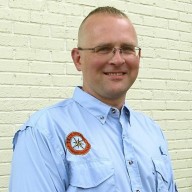What does COVID-19 have to do with Wilderness Survival?
As the tide of fear regarding the COVID-19 virus washed in locally this weekend, I witnessed a wide mix of responses, some of which I found heartening and others which left me with a loss of words. Most people seemed to be simply going about their lives while following the recommended Center for Disease Control guidelines, like avoiding large crowds or events, maintaining distances of 6 feet from other persons for long periods of time, staying home if feeling ill, and, most importantly, washing hands regularly. Likewise, on Saturday morning, while at a local gun store with Instructor Jarod, to buy a box of ammunition for a long planned private training with him (I’m a police officer) that he was kind enough to provide me, a customer had purportedly just left after having spent $20,000 on assorted weapons. And later that day, I watched customers at a local store clear the shelves of toilet paper. I learned of others heading off to their “camp” for at least a few days. Although this health crisis is unprecedented, one can still be guided by the simple principles of wilderness survival that apply to any emergency, anywhere.
At True North, we teach our clients — just as the U.S. military teaches its personnel — that in any survival situation or emergency, there are always seven priorities. In order of importance, they are: #1 Mental Attitude; #2 Physical Safety / Medical; #3 Shelter; #4 Fire; #5 Signal; #6 Water; and #7 Food. The first two always remain #1 and #2, #7 is always last, and the rest can flex as the situation warrants.
In the current situation, only the first two priorities presently apply. Despite the upheaval in, and inconvenience to, our lives, we have plenty of access to food and water, our homes will protect us from the elements and allow us to stay warm, and we continue to have easy ability to call for and receive help. This allows us, then, to simply focus on what’s really most important: To take what are mostly simple precautions to keep ourselves from becoming, or making others, ill, and keeping a positive mental attitude throughout that will keep each of us focused on the real risks and the real priorities so that we can manage them without letting fear distract us.
That’s because, when you stop to think about it, the essence of wilderness survival training isn’t about hiding in a bunker with a stockpile of supplies and ammunition while waiting out the crisis. Rather, wilderness survival training is about having the ability and mindset to be able to step forward in a crisis to take care of, protect, and think of, others.
So that, when the crisis does finally clear, we can each be proud of ourselves.

